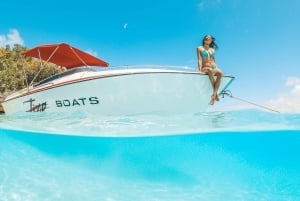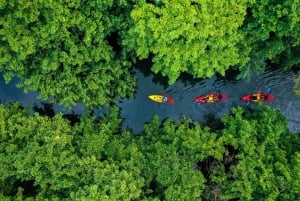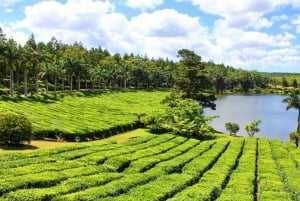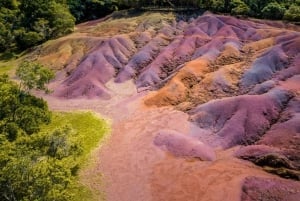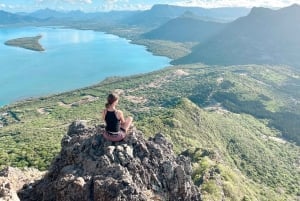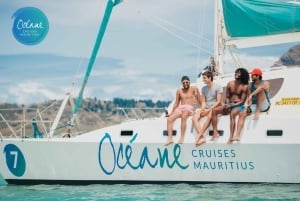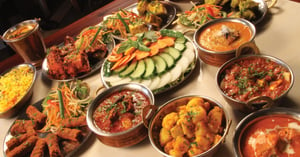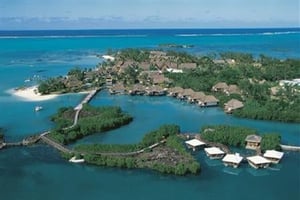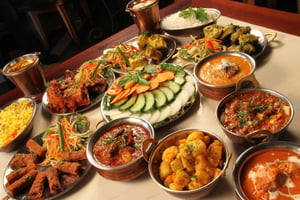Facts and Figures about Mauritius
Geography of Mauritius
Mauritius is situated in the south western region of the Indian Ocean (the ocean in between the African and Australian Continent) in latitude 20° (between 19°50' and 20°32') south and longitude 57° (57°18' and 57°46') east of Greenwich. It is a tropical island being slightly over the tropic of Capricorn. It is 2,000 km off the east coast of the mainland of Africa and some 855 km east of Madagascar.
It is part of the Mascarenes Archipelago, which is made up of Mauritius, Reunion Island and Rodrigues. These three islands situated a few kilometers from one another (15 minutes flight to reach Reunion and 30minutes flight to reach Rodrigues) have been named the Mascarenes islands after the navigator Pedro Mascarenhas who was one of the first Europeans to get to know about their existence at the beginning of the 16th century.
This little gem also known as the star and key of the Indian Ocean is an island of volcanic origin which has started to emerge some 8 million years. It is almost entirely surrounded by coral reefs except in the southern region of the island where you will notice more rough seas.
Having been formed by volcanic origin the island is not a flat one, its geography consists of a central plateau which is surrounded by a chain of mountains (Moka, Corps de Garde, Pieter Both) and some isolated peaks (Piton du Milieu) which are remains from the primary crater which shaped the island. The highest point on the mainland is Piton de La Petite Riviere Noire known as the Black River Peak at 828 meters (2,717 feet). Grand River South East, the longest river of the island is thirty four meters long.
Population of Mauritius
In fact Mauritius is the mainland of the Republic of Mauritius which also comprises of Rodrigues, Agalega, Tromelin, Cargados Carajos (Saint Brandon) and the Chagos Archipelago which are other small islands and archipelagos situated in the Indian Ocean. The population of the Republic of Mauritius stood at 1,265,577 as at 1st July 2018. Islandwise, the population as at 1st July 2018 was as follows: Island of Mauritius 1,222,268, Island of Rodrigues 43,035, Agalega and St Brandon 274.
History of Mauritius
After being visited by the Arabs, Portuguese and Dutch, the island has also been the colony of both the French and English people. Thus the various movements of the 18th, 19th and early 20th centuries have created a population on the island with a unique blend of different races, cultures and religions with European, African, Indian and Chinese origins giving rise to a rich array of festivals on the island throughout the year and a delicious cuisine.
Language
Mauritius mother tongue is Creole (Kreol). It is most often used in informal settings. It is a natural language which has been developed from a mixture of different languages. Mauritian creole (Kreol) is French based and originates from slaves who came from Mozambique and Madagascar during the French colony. English is the official language. Official documents are to be filled in English. But French and Creole are most widely spoken. Asian languages such as Hindi, Mandarin (Chinese language) also form part of our rich linguistic culture. There is also Bhojpuri (a mixture of Hindi and Kreol).
Flag & National Anthem
Mauritius became independent on 12th March 1968. The flag of the island bears 4 colours. It consists of four equal horizontal stripes Red, Blue, Yellow and Green (in the proportion of 6 to 4). The Red colour represents the struggle for freedom and independence, the Blue represents the Indian Ocean in the middle of which Mauritius is situated, the Yellow represents the new light of independence shining over the island, and the Green represents the agriculture of Mauritius and its colour throughout the twelve months of the year.
Mauritian poet, Jean Georges Prosper, MBE wrote the lyrics of the National Anthem for Mauritius following an open competition launched in 1968. The music was then composed by Philippe Gentil, MBE, violonist, trumpeter and saxophonist of the Police Band.
Weather and Climate
As an island situated south of the equator, Mauritius has a tropical marine climate which means that the ocean is the main factor influencing the climate. We have only two seasons: summer and winter. Summer lasts from November to April and winter from May to October but the winter is quite mild. The months of October and May are commonly known as the transition months. Mean summer temperature is 24.7 degrees Celsius and mean winter temperature is 20.4 degrees Celsius. As you can see, the temperature difference between the two seasons is 4.3 degrees Celsius only, so winter is not that cold.
Currency
The currency used in Mauritius is the Mauritian rupee which is divided into 100 cents. The Abbreviation for the Mauritian currency is either MUR or Rs.
Capital
The capital of the island, Port Louis is situated in the north western part of the island.
Airport
There is only one airport on the island, The Sir Seewoosagur Ramgoolam International Airport situated in the south of the island namely at Plaisance.
Tourists
About more than 1,000,000 tourists visit us yearly. The number of tourist arrivals for the first nine months of 2018 is 934,679 (same period 2017: 975,066). 71% of total tourist arrivals (693,727) come from France (190,417), United Kingdom (104,123), Reunion Island (100,095), Germany (88,206), South Africa (87,484), India (68,385) and China (55,017).
The Dodo
One of the emblematic birds representing Mauritius is the Dodo, with Mauritius sometimes being referred to as ‘Dodoland’. Unfortunately it has become extinct but it remains an important symbol of the island. The Dodo (Raphus cucullatus) was a bird that was endemic to our island. The last one was killed in 1681.
National Flower
Trochetia Boutoniana (most well known as the ‘Boucle d'Oreille’), named after the famous French botanist, Louis Bouton was declared the National Flower of the island on the 12th March 1992, when Mauritius became a Republic. This flower is endemic to Mauritius and is found in only one locality in the wild. It reaches about 2-3 metres in height, and gives reddish-orange flowers. Adapted to dry condition, it commonly flowers from June to October.
Coat of Arms
The coat of arms of Mauritius has the following motto in Latin "Stella Clavisque Maris Indici" which means "Star and Key of the Indian Ocean” in English. In the picture of the coat of arms below you will see a key in the lower left quarter and a white star on the right-hand side. You will also notice the presence of the Dodo which we saw earlier and discussed its importance in the history of Mauritius.
The arms were designed in 1906 by Johann Van Der Puf, who was the Mayor of Johannesburg.



